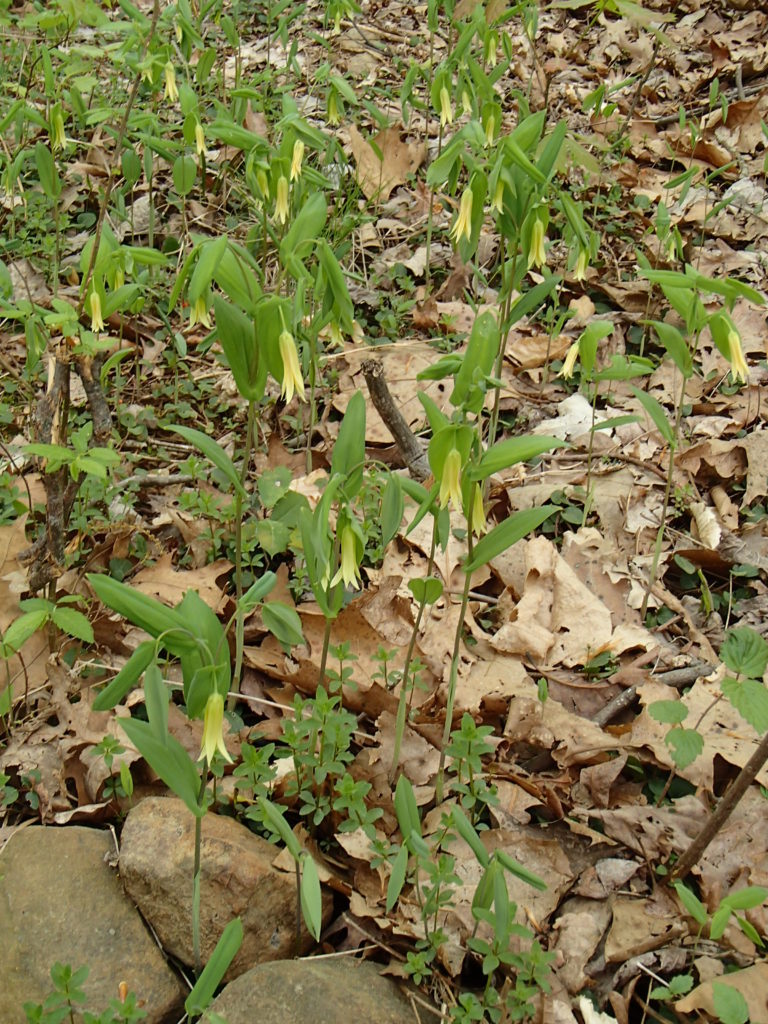This plant is not currently for sale. This is an archive page preserved for informational use.
Bellwort is a beautiful understory wildflower that sprouts up delicate green in early spring (April) in shady, dry-to-mesic woods or wooded gardens in piedmont and mountain counties in North Carolina. Found from Massachusetts southward, it becomes less common in the souhern part of its range in our southern Gulf states. Bellwort spreads by fleshy, white underground stolons to form great sweeps of single-stemmed, 10-to-15 inch tall, daintily drooping, soft yellow flowers, one per stem, as far as the eye can see. It is an early blush of spring green against the brown leaf cover of the winter forest floor, a harbinger of things to come, then becoming dormant later in the growing season. The name refers to the way in which the upright stem seems to penetrate the perfoliate leaf. The fruit is a distinctive, triangular, 3-lobed capsule. We are fortunate to have these flowers, unplanted, inside our deer fence, and they fill one with gratitude for the generosity of Mother Nature!

